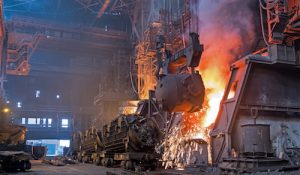Raw Steels MMI: Subindex Dips on Mixed Price Movements
The Raw Steels Monthly Metals Index (MMI) fell by one point this month to 81, a 1.2% decline from the previous month’s MMI value.
Need buying strategies for steel? Request your two-month free trial of MetalMiner’s Outlook
Price weakness in the index came from the U.S. HRC 3-month futures contract, with a 6.3% decline in price this month, while Chinese Dalian coking coal prices declined by 7.2%. The declining prices pulled the index down, in spite of the 16.2% increase in Korean scrap steel prices.
U.S.steel prices generally trended gently upward after stabilizing earlier in the year. CRC prices increased by around 3% on a month-on-month basis, while HDG increased by nearly 3%. HRC prices edged up by just over 1% while plate prices held steady month on month.
Overall, prices stayed firm, in line with seasonal supply and demand factors at work in construction, in particular. Generally stronger-than-expected industrial performance in both the U.S. and China provided price strength.
Similarly, and in line with more positive economic data than generally anticipated, Chinese steel prices increased so far this year, leading the U.S. price increase (as generally expected by technical analysis of steel prices since Chinese prices tend to move first).
Based on a basic visual comparison of Chinese steel prices with the China Manufacturing Purchasing Managers Index (PMI) trendline, as the PMI crosses the threshold over 50, steel prices tend to increase while they tended to fall during months of contractionary sub-50 readings. As we can see the PMI trending upward, we can expect steel prices to rise.
On the other hand, the comparison of trendlines between steel prices and China’s FXI, a large-cap ETF index, shows a relationship that appears weaker, with values moving in opposite directions at times (although still typically following a similar movement).
Given that China’s PMI reading increased recently, this indicates the potential for steel prices to show strength.
A Comparison of U.S. and Chinese Steel Prices
The spread between U.S. HRC and China HRC prices flattened out for the last couple readings after falling for a few months now, with a price differential in early April of $181/st.
This month, U.S. CRC prices outpaced China CRC prices. The spread once again trended slightly upward between the two after trending more or less downward since July 2018, with the current price differential of around $255/st.
Iron ore prices increased again this month, after some moderation in price increases from earlier this year. Weather issues stemming from Tropical Cyclone Veronica in Australia last month kept prices higher, in addition to a general improvement in the industrial outlook in China, which could support higher iron ore prices, and therefore higher steel prices. Coking coal prices, on the other hand, have generally fallen so far in 2019, which may exert downward pressure on steel prices.
What This Means for Industrial Buyers
Even with the lower index value this month, some forms of steel still showed upward momentum, indicating prices could be on the rise once again; that is, at least for the short term, supported by stronger-than-expected economic performance in the U.S. and China.
Like last month, plate prices continue to sit at high levels. Plate prices sit near $1,000/st, rising again after briefly falling back to $993/st in late March.
With prices still somewhat higher and other factors indicating some potential to increase further, buying organizations need to watch the market carefully for the right time to buy.
For more specific pricing guidance, try our Monthly Metal Miner Outlook Report on us – free for the first two months.
Actual Raw Steel Prices and Trends
U.S. shredded scrap prices stayed flat during March while the U.S. HRC futures contract 3-month price fell 6.3%.
Chinese Dalian coking coal prices were down 7.2%, falling the most of all the metals tracked in the Raw Steels MMI basket.
The price of Korean scrap steel increased the most, jumping 16.25%. Other price movements in the basket were much more modest, oscillating around the plus or minus 1% mark.










Leave a Reply